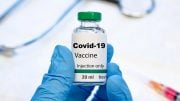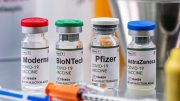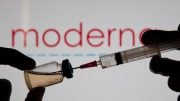
A recent Australian study discovered fundamental differences in immune responses between the AstraZeneca and Pfizer COVID-19 vaccines. The AstraZeneca vaccine elicited an unexpected memory-like response, potentially explaining its rare association with blood clotting, while the Pfizer vaccine induced stronger B and T cell activity. Booster doses, particularly mRNA ones, were found to be crucial for enhancing immune responses.
Scientists identify key differences in immune responses to the AstraZeneca and Pfizer vaccines.
A recent study conducted by a team from SAHMRI and Flinders University in Australia has revealed significant variations in the way the AstraZeneca and Pfizer COVID-19 vaccines affect the immune system. The findings, published in Cell Reports Medicine, are part of the COVID-19 Vaccine Immune Responses Study (COVIRS) and were based on the analysis of the immune responses of 102 adults of various ages residing in South Australia, where there was no SARS-CoV-2 community transmission at the time of the study.
The participants in the study had their blood samples collected immediately after receiving each dose of either the Oxford/AstraZeneca or Pfizer/BioNTech COVID-19 vaccine, in order to evaluate their early immune response. Further tests were conducted 28 days after each immunization to measure the activity of B and T cells, both of which play a crucial role in the immune response. B cells produce antibodies, while T cells target and eliminate infected cells.
The vaccines are alike in the sense that they induce the immune system to recognize and protect against the SARS-CoV-2 virus, but they differ in how this is achieved. The Pfizer vaccine uses mRNA technology to induce host cells to produce the SARS-CoV-2 Spike protein, while the AstraZeneca vaccine uses a harmless virus (a chimpanzee adenovirus) to encode the Spike protein.
Head of SAHMRI’s Systems Immunology Laboratory and Flinders University Professor David Lynn led the study, using a method of biological analysis known as ‘multi-omics’ to examine immune responses in many different ways in thousands of blood samples. Professor Lynn says this comprehensive analysis of immune responses to these different vaccines has revealed lots of new information that’ll help inform future vaccine design.
“After the first dose, we were surprised to find the Oxford/AstraZeneca vaccine elicits an unexpected memory-like response in the immune system, recognizing the vaccine as if it’s something it’s seen before,” says Professor Lynn, from the College of Medicine and Public Health at Flinders University.
“This response is targeted against the adenovirus vector in the vaccine, not the Spike protein and the intensity of this response correlates with the expression of proteins that act as a pre-cursor to thrombosis, or blood clotting. While Vaccine-induced immune thrombotic thrombocytopenia (VITT) is an extremely rare side effect associated with the Oxford/AstraZeneca vaccine that none of the participants developed during the study, this research offers a potential explanation for the connection between the Oxford/AstraZeneca vaccine and the cases of VITT that have been reported.”
The study also found those who’d only had two doses of the Oxford/AstraZeneca vaccine generally produced lower amounts of antibodies and less of a specialized type of T-cell that helps with antibody production; compared to those who had two doses of the Pfizer/BioNTech vaccine.
However, this was rectified once they had their third booster dose of an mRNA vaccine, illustrating the importance of booster doses. The study added evidence to the notion that COVID-19 vaccines offer some people more effective protection than others.
The reasons for this variability are not well understood, but Professor Lynn says age is a factor, with older people generally having a lower immune response after two doses. Fortunately, a third booster dose was highly effective at overcoming this. Immune responses induced immediately after vaccination predicted the subsequent B and T cell response to the vaccine measured a month later.
“One to two days after initial vaccination we measured gene expression responses in the blood which correlated with adaptive immune responses that mediate protection 28 days later,” Professor Lynn says.
A further surprise to researchers was the finding that feeling unwell after a vaccine dose may in fact be linked to its effectiveness.
“People who showed symptoms of fatigue and fever immediately after the third dose were more likely to have better T-cell responses. T-cells play a vital role in vaccine efficacy as they can directly kill viral cells,” Professor Lynn said.
Overall, this project has provided important new insights into the early immune responses to these vaccines and offers a greater understanding of how they work to protect against COVID-19.
Reference: “A systems immunology study comparing innate and adaptive immune responses in adults to COVID-19 mRNA and adenovirus vectored vaccines” by Feargal J. Ryan, Todd S. Norton, Conor McCafferty, Stephen J. Blake, Natalie E. Stevens, Jane James, Georgina L. Eden, Yee C. Tee, Saoirse C. Benson, Makutiro G. Masavuli, Arthur E.L. Yeow, Arunasingam Abayasingam, David Agapiou, Hannah Stevens, Jana Zecha, Nicole L. Messina, Nigel Curtis, Vera Ignjatovic, Paul Monagle, Huyen Tran, James D. McFadyen, Rowena A. Bull, Branka Grubor-Bauk, Miriam A. Lynn, Rochelle Botten, Simone E. Barry and David J. Lynn, 16 February 2023, Cell Reports Medicine.
DOI: 10.1016/j.xcrm.2023.100971
The study was a major collaboration involving SAHMRI, Flinders University, Murdoch Children’s Research Institute, The University of Melbourne, The University of Adelaide, Basil Hetzel Institute for Translational Health Research, University of New South Wales, The Kirby Institute, Alfred Hospital, Monash University, AstraZeneca and the Royal Adelaide Hospital.
The team wishes to express its gratitude to all participants and funders, including Bioplatforms Australia, AstraZeneca, The Hospital Research Foundation and the Flinders Foundation.









A ghastly thought. That and the shedding of the vaccine. Something that is not admitted, but is debilitating.
Don’t ask us to trust “the science” again, ever.
I hear the BEX alarm bells ringing loud enough to rupture the eardrums of every dimwitted, gullible, and easily snookered obedient sheep who took the jab in the entire world.
This article smells to me like the beginnings of a finger pointing and blame shifting turf battle between AstraZeneca and Pfizer, as the evidence and injury and death toll statistics that are directly tied to their dangerous and deliberately harmful vaccines continues to explode in both the alternative online news and even in some pockets of the mainstream news.
This entire fiasco was clearly part of a deliberate, diabolically evil agenda to depopulate primarily the White Western nations – but also, to a lesser extent, certain nations of the Third World by unleashing a bio-weapon on the populations of these nations.
“not well understood” – but the profit potential is very well understood.